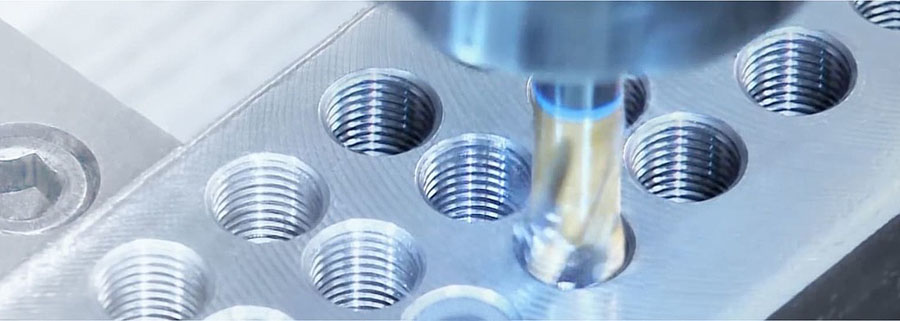Screw connections are of great significance in mechanical structures and are an effective way of connecting mechanical structures. Thread connection technology can not only solve the problem of mechanical structure connection, but also achieve adjustment and adjustment functions, play a fixed connection and support role, have good reliability, can effectively reduce the weight of the structure, and make significant contributions to the development of mechanical engineering.
In order to manufacture precise threads, we need to follow many thread design rules. In addition, these features also have additional considerations and careful work to ensure final production according to design. Successful threads can sustain components for many years. Let’s delve into the key considerations for thread design in CNC machining.
1. Thread Type and Purpose:
Standard Threads: If the application permits, standard thread types, such as metric or imperial threads, are often more cost-effective due to the availability of standardized tooling.
Acme Threads: Used for applications requiring heavy loads and high efficiency, Acme threads have a trapezoidal shape, providing better strength and wear resistance.
2. Thread Size and Pitch:
Fine vs. Coarse Threads: The choice between fine and coarse threads depends on the application. Coarse threads are quicker to engage and disengage, making them suitable for applications where speed is essential. Fine threads offer better precision and are often chosen for applications requiring greater holding power.
3. Material Considerations:
Material Compatibility: The material of the threaded part must be compatible with the mating part. CNC machining allows for the use of various materials, including metals, plastics, and composites.
Hardness and Wear Resistance: Threads are subject to wear, especially in high-friction applications. Choosing materials with appropriate hardness and wear resistance is vital for long-term performance.
4. Thread Depth and Engagement:
Thread Depth: The depth of the thread influences the strength of the connection. However, excessive thread depth may lead to unnecessary material removal and increased production costs.
Even if there are fewer restrictions on thread placement, the depth of internal threads is still a key factor to consider. Once the thread depth exceeds the maximum machining depth, the only method is to drill both sides of the hole and complete this process. In this case, there is another issue where the thread is not continuous from one end to the other.
Engagement Length: Ensuring sufficient thread engagement is crucial for the stability and load-bearing capacity of the connection.

5. Thread Relief:
Root and Crest Relief: CNC machining allows for precise control over the root and crest radii of threads. Proper relief design contributes to thread strength and reduces stress concentrations.
6. Tolerances and Fits:
Tight vs. Loose Fits: The fit between mating threads depends on the application requirements. CNC machining offers high precision, enabling the production of threads with tight tolerances for precise fits or looser tolerances for ease of assembly.
7. Surface Finish:
Smooth Surfaces: CNC machining provides the capability to achieve smooth thread surfaces, reducing friction and wear. This is particularly important in applications where smooth motion or sealing is critical.
8. Thread Inspection:
Quality Control: CNC machining allows for integrated quality control measures. Threaded components should undergo thorough inspection, including checks for pitch diameter, lead, and overall conformity to specifications.
9. CNC Programming for Threads:
Thread Milling vs. Tapping: CNC machining offers various techniques for creating threads, including thread milling and tapping. The choice depends on factors like material, thread type, and production volume.
In conclusion, the precision and versatility of CNC machining make it an ideal choice for crafting high-quality threads in mechanical components. Careful consideration of thread design, material selection, and machining techniques ensures optimal performance and longevity in diverse applications.



